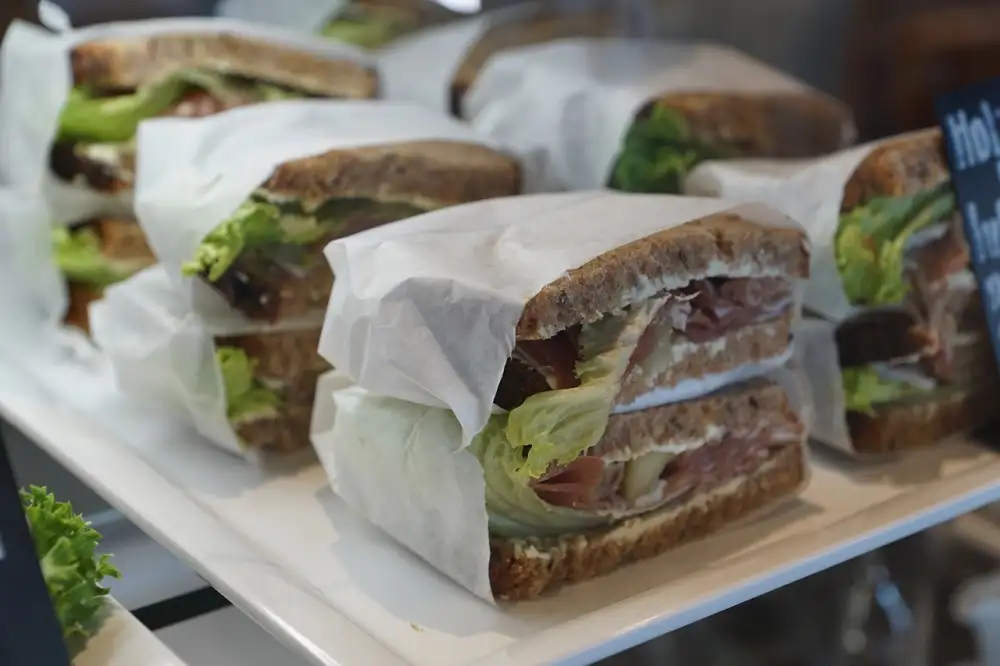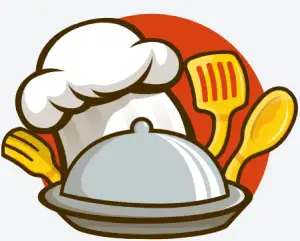Delight in the Divine Flavors of Easter Bread: A Traditional Recipe to Elevate Your Home Cooking

Easter is a time of celebration and joy, and what better way to add a touch of tradition to your festivities than with the delightful flavors of Easter bread? This rich and aromatic bread has been a staple in many cultures for centuries, symbolizing new beginnings and the resurrection of Christ. Whether you're a seasoned baker or just starting out, making your own Easter bread is a wonderful way to connect with the past and create something truly special for your loved ones. So gather your ingredients and let's embark on this culinary journey together!
History and Significance of Easter Bread
Easter bread, also known as Pascha or Kulich, has a rich history dating back centuries. It is a traditional bread that holds great significance in many cultures and religions around the world. The origins of Easter bread can be traced back to ancient pagan rituals celebrating the arrival of spring and the rebirth of nature.
In Christianity, Easter bread symbolizes the resurrection of Jesus Christ. It is often baked and enjoyed during the Easter season, particularly on Easter Sunday. The shape of the bread varies across different regions, with some resembling a round loaf or a tall cylindrical shape.
The ingredients used in Easter bread hold symbolic meanings as well. The use of eggs represents new life and fertility, while the addition of spices like cinnamon and nutmeg signifies the exotic flavors associated with this festive time.
Easter bread is not only a delicious treat but also an important part of cultural traditions. Families gather together to bake and share this special bread, passing down recipes from generation to generation. It brings people closer, fostering a sense of community and unity during this joyous occasion.
By understanding the history and significance behind Easter bread, we can appreciate its role in our culinary heritage and celebrate this sacred holiday with reverence and delight.
Ingredients for Easter Bread
To create the perfect Easter bread, you will need the following ingredients:
1. Flour: Start with 4 cups of all-purpose flour. This will give your bread a light and fluffy texture.
2. Yeast: Use 2 ¼ teaspoons of active dry yeast to help your dough rise and develop that signature airy consistency.
3. Sugar: Add ½ cup of granulated sugar to sweeten the bread and enhance its flavor.
4. Milk: Use 1 cup of warm milk to activate the yeast and provide moisture to the dough.
5. Butter: Incorporate ½ cup of softened butter into the dough for richness and a tender crumb.
6. Eggs: Include 3 large eggs in your recipe for structure, color, and richness.
7. Salt: Add 1 teaspoon of salt to balance out the sweetness and enhance the overall taste of your bread.
8. Vanilla extract: For a delightful aroma, add 1 teaspoon of vanilla extract to infuse your bread with a subtle hint of flavor.
9. Raisins or candied fruit: Optional but traditional, you can include 1 cup of raisins or candied fruit to add bursts of sweetness and texture to your Easter bread.
10. Egg wash: To achieve that beautiful golden-brown crust, prepare an egg wash by whisking together one egg with a tablespoon of water.
Remember, these ingredients can be adjusted based on personal preference or dietary restrictions. So gather these essentials, and let's move on to creating this delectable Easter treat!
Step-by-Step Instructions for Making Easter Bread
1. In a large mixing bowl, combine warm milk, yeast, and sugar. Let it sit for 5 minutes until the mixture becomes frothy.
2. Add melted butter, eggs, vanilla extract, and orange zest to the bowl. Mix well.
3. Gradually add flour and salt to the mixture while stirring with a wooden spoon. Once the dough starts to come together, knead it on a floured surface for about 10 minutes until it becomes smooth and elastic.
4. Place the dough in a greased bowl, cover it with a clean kitchen towel, and let it rise in a warm place for about 1-2 hours or until doubled in size.
5. Punch down the risen dough and divide it into three equal parts. Roll each part into long ropes of equal length.
6. Braid the three ropes together tightly, tucking the ends under to form a round loaf shape.
7. Transfer the braided loaf onto a baking sheet lined with parchment paper. Cover it again with a kitchen towel and let it rise for another 30 minutes.
8. Preheat your oven to 350°F (175°C). Brush the risen bread with beaten egg wash and sprinkle colored sugar or sprinkles on top for decoration if desired.
9. Bake the Easter bread in the preheated oven for about 25-30 minutes or until golden brown on top and cooked through.
10. Remove from the oven and let it cool completely before slicing and serving.
Tips and Tricks for Perfect Easter Bread
1. Use fresh ingredients: Make sure your yeast is not expired and your flour is fresh to ensure a light and fluffy texture.
2. Proof the yeast: Dissolve the yeast in warm water with a pinch of sugar before adding it to the dough. This will activate the yeast and help it rise properly.
3. Knead thoroughly: Take your time when kneading the dough to develop gluten, which gives the bread its structure. Knead until the dough is smooth and elastic.
4. Allow proper rising time: Give the dough enough time to rise until it has doubled in size. This will result in a lighter and more flavorful bread.
5. Keep an eye on temperature: The ideal temperature for rising dough is around 80°F (27°C). Too cold, and the bread won't rise properly; too hot, and it may overproof.
6. Add flavors creatively: Experiment with different flavors by incorporating ingredients like raisins, candied fruits, or spices such as cinnamon or nutmeg into your Easter bread.
7. Brush with egg wash: Before baking, brush the top of your Easter bread with an egg wash to give it a beautiful golden color and a glossy finish.
8. Don't rush cooling: Allow your Easter bread to cool completely before slicing into it. This will prevent it from becoming gummy or collapsing.
By following these tips, you'll be able to create a perfect Easter bread that will impress your family and friends with its divine taste and delightful aroma!
Variations and Additions to Easter Bread
While the traditional recipe for Easter bread is delicious on its own, you can also experiment with different variations and additions to add your own personal touch. Here are a few ideas to get you started:
1. Fruity Twist: Add dried fruits like raisins, currants, or chopped apricots to the dough for a burst of sweetness in every bite. You can also sprinkle some candied fruit on top before baking for an extra colorful touch.
2. Nutty Delight: Incorporate chopped nuts such as almonds, walnuts, or pistachios into the dough for added crunch and flavor. Toasting the nuts beforehand will enhance their taste even more.
3. Zesty Citrus: Grate some lemon or orange zest into the dough to infuse it with a refreshing citrus aroma. You can also drizzle a simple glaze made with citrus juice and powdered sugar over the bread once it's cooled for an extra tangy kick.
4. Chocolate Indulgence: For all the chocolate lovers out there, add chocolate chips or chunks to the dough for a decadent twist. The melted chocolate will create pockets of gooey goodness throughout the bread.
5. Spiced Sensation: Experiment with spices like cinnamon, nutmeg, or cardamom to give your Easter bread a warm and aromatic flavor profile. Sprinkle some spice on top before baking for an enticing aroma that will fill your kitchen.
Remember, these variations are just suggestions - feel free to mix and match ingredients according to your taste preferences. Don't be afraid to get creative and let your culinary imagination run wild!
Serving and Enjoying Easter Bread
Once your homemade Easter bread is beautifully baked and cooled, it's time to serve and savor this delightful treat. There are several ways to enjoy Easter bread, depending on personal preference and traditions.
One classic way to serve Easter bread is by slicing it into thick slices and enjoying it as is. The soft, slightly sweet bread pairs perfectly with a cup of tea or coffee for a cozy afternoon snack. You can also toast the slices lightly and spread some butter or jam for an extra burst of flavor.
Another popular option is to slice the Easter bread into thin pieces and use them as a base for sandwiches. Layer some ham, cheese, lettuce, and tomato between two slices of Easter bread for a delicious twist on a traditional sandwich.
For those who prefer a sweeter experience, you can drizzle some honey or sprinkle powdered sugar over the sliced Easter bread. This adds an extra touch of sweetness that will satisfy any sweet tooth.
Easter bread can also be transformed into French toast for a decadent breakfast or brunch. Dip thick slices of the bread in a mixture of beaten eggs, milk, cinnamon, and vanilla extract. Cook them on a griddle until golden brown on both sides. Serve with maple syrup or fresh fruit for an indulgent start to your day.
No matter how you choose to serve it, remember that Easter bread is best enjoyed when shared with loved ones. Gather around the table with family and friends, savoring each bite while creating cherished memories together.
So this Easter season, elevate your home cooking by making this traditional recipe for Easter bread. Its divine flavors will surely bring joy to your celebrations and leave everyone asking for more.
There is no better way to celebrate Easter than by indulging in the divine flavors of homemade Easter bread. This traditional recipe not only elevates your home cooking but also adds a touch of warmth and love to your festive table.
By taking the time to make this special bread from scratch, you are honoring the rich history and significance behind Easter bread. The process itself becomes a labor of love, as you mix together simple ingredients and watch them transform into a beautiful loaf that symbolizes rebirth and new beginnings.
As you savor each bite of this tender and aromatic bread, you will be transported back in time to ancient traditions and family gatherings. The sweet aroma filling your kitchen will create lasting memories for years to come.
So, this Easter, gather your loved ones around the table and delight in the heavenly taste of homemade Easter bread. Let its soft texture and delicate flavors bring joy and happiness to your celebrations. Embrace the art of cooking by unleashing your culinary creativity with food, starting with this timeless recipe that connects us all through generations.
Published: 09. 12. 2023
Category: Food



